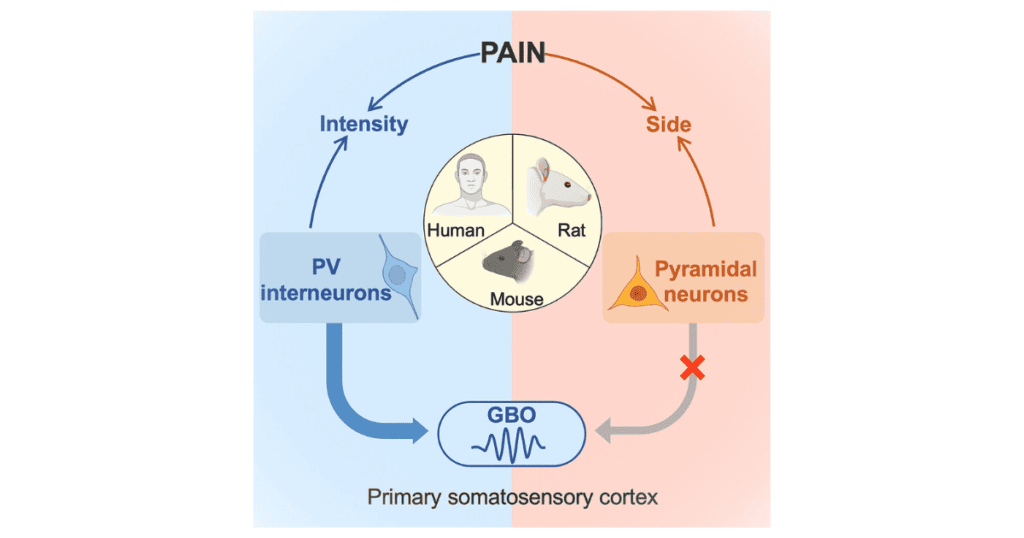Date: Wednesday, April 23rd, 9:00 am to 10:00 am, EDT
The mission of IASP’s Neuroimaging of Pain Special Interest Group is to advance the understanding of cerebral and spinal mechanisms of pain using brain mapping techniques and to promote a community engaged in advancing pain neuroimaging methods. To fulfill its mission, the SIG provides opportunities to network, collaborate, and share experiences, as well as organize in-person events at conferences, and learning sessions – such as webinars.

Pain remains a major source of human suffering and imposes significant economic burdens worldwide. The subjective nature of pain assessment makes accurate diagnosis and effective treatment challenging, highlighting the critical need for reliable neural biomarkers of pain perception. Gamma band oscillations (GBOs) in the primary somatosensory cortex (S1) are increasingly recognized as robust biomarkers for nociceptive processing across species. However, the neuronal mechanisms underpinning nociceptive-evoked GBOs have remained unclear. This webinar addresses this crucial knowledge gap by presenting findings highlighted as a Papers of the Week Editor’s Pick from cross-species studies using a range of experimental techniques, including electroencephalography (EEG) in humans, silicon probe recordings and calcium imaging in rodents, and optogenetic manipulations (alone or combined with electrophysiology) in mice. We demonstrate that nociceptive-evoked GBOs preferentially encoding pain intensity are generated by parvalbumin-positive interneurons in S1. Join us to understand how these findings connect microscopic neuronal activity with macroscopic neural biomarkers, paving the way for innovative pain assessment tools and targeted therapies through GBO modulation.
This webinar will provide pain professionals with an in-depth understanding of the neuronal mechanisms underlying nociceptive-evoked GBOs. Participants will gain insights into how nociceptive-evoked neural activity at different scales—from the micro-level of individual PV interneurons to the macro-level of GBOs—is interconnected and will discuss practical applications of these findings in pain assessment and targeted pain management therapies.
Participants include:
— Li Hu, PhD, Chinese Academy of Sciences, Beijing
— David Seminowicz, PhD, University of Western Ontario, Canada (moderator)
About the Speaker
 Li Hu, PhD, is a professor at the Institute of Psychology at the Chinese Academy of Sciences (CAS). He received his PhD from the University of Hong Kong in 2010 and has been a principal investigator at the Institute of Psychology (CAS) since 2016. His research focuses on unraveling the cognitive and neural mechanisms underlying pain perception and its modulation. Employing advanced cross-species paradigms, multimodal neuroimaging techniques, and cognitive neuromodulation approaches, his work mainly aims to identify reliable neural indicators associated with pain sensitivity and discriminability. Additionally, he actively investigates novel non-pharmacological analgesic strategies, such as neuromodulation and cognitive-behavioral interventions, and explores the underlying neural mechanisms that drive their efficacy. His research has been supported by the National Key Research and Development Program of China, the National Natural Science Foundation of China, the Beijing Natural Science Foundation, and industry collaborations.
Li Hu, PhD, is a professor at the Institute of Psychology at the Chinese Academy of Sciences (CAS). He received his PhD from the University of Hong Kong in 2010 and has been a principal investigator at the Institute of Psychology (CAS) since 2016. His research focuses on unraveling the cognitive and neural mechanisms underlying pain perception and its modulation. Employing advanced cross-species paradigms, multimodal neuroimaging techniques, and cognitive neuromodulation approaches, his work mainly aims to identify reliable neural indicators associated with pain sensitivity and discriminability. Additionally, he actively investigates novel non-pharmacological analgesic strategies, such as neuromodulation and cognitive-behavioral interventions, and explores the underlying neural mechanisms that drive their efficacy. His research has been supported by the National Key Research and Development Program of China, the National Natural Science Foundation of China, the Beijing Natural Science Foundation, and industry collaborations.
About the Host
 David A. Seminowicz, PhD, is a professor and Wolfe-Western Fellow in the Department of Medical Biophysics, Schulich School of Medicine & Dentistry, and the University of Western Ontario. He earned a BSc from the University of Guelph, a PhD at the University of Toronto and completed postdoctoral training at McGill University. He was faculty at University of Maryland, Baltimore, from 2010-2022. He was also Principal Research Scientist at Neuroscience Research Australia, in Sydney, from 2019-2022. His work has focused on the cognitive aspects of pain, individual differences in the response to pain, and the consequence of chronic pain on brain structure and function. His studies have clarified how pain-related and cognitive-related brain activity interact and how passive and active pain coping strategies affect these types of activity. His work further suggested a brain mechanism through which chronic pain might affect cognitive ability and continues testing this hypothesis in intervention studies in people with chronic pain. The clinical populations in these studies include chronic low back pain, chronic and episodic migraine, and burning mouth syndrome. Dr. Seminowicz has also used rodent MRI to ask questions that could not easily be addressed in humans, such as how the brain changes over time from before the onset of an injury that leads to chronic pain, to the time when the disease affects cognitive and affective behaviors. Ongoing studies in Dr. Seminowicz’s lab employ longitudinal designs to assess how interventions affect brain function and whether pain biomarkers can be developed. Another line of work examines the role of the claustrum in cognitive control and pain. The main techniques in his lab include quantitative sensory testing, EEG, structural and functional MRI, and simultaneous EEG-fMRI. His main funding has been from the NIH, CIHR, NSERC, intercampus initiatives, private foundations, and industry.
David A. Seminowicz, PhD, is a professor and Wolfe-Western Fellow in the Department of Medical Biophysics, Schulich School of Medicine & Dentistry, and the University of Western Ontario. He earned a BSc from the University of Guelph, a PhD at the University of Toronto and completed postdoctoral training at McGill University. He was faculty at University of Maryland, Baltimore, from 2010-2022. He was also Principal Research Scientist at Neuroscience Research Australia, in Sydney, from 2019-2022. His work has focused on the cognitive aspects of pain, individual differences in the response to pain, and the consequence of chronic pain on brain structure and function. His studies have clarified how pain-related and cognitive-related brain activity interact and how passive and active pain coping strategies affect these types of activity. His work further suggested a brain mechanism through which chronic pain might affect cognitive ability and continues testing this hypothesis in intervention studies in people with chronic pain. The clinical populations in these studies include chronic low back pain, chronic and episodic migraine, and burning mouth syndrome. Dr. Seminowicz has also used rodent MRI to ask questions that could not easily be addressed in humans, such as how the brain changes over time from before the onset of an injury that leads to chronic pain, to the time when the disease affects cognitive and affective behaviors. Ongoing studies in Dr. Seminowicz’s lab employ longitudinal designs to assess how interventions affect brain function and whether pain biomarkers can be developed. Another line of work examines the role of the claustrum in cognitive control and pain. The main techniques in his lab include quantitative sensory testing, EEG, structural and functional MRI, and simultaneous EEG-fMRI. His main funding has been from the NIH, CIHR, NSERC, intercampus initiatives, private foundations, and industry.


